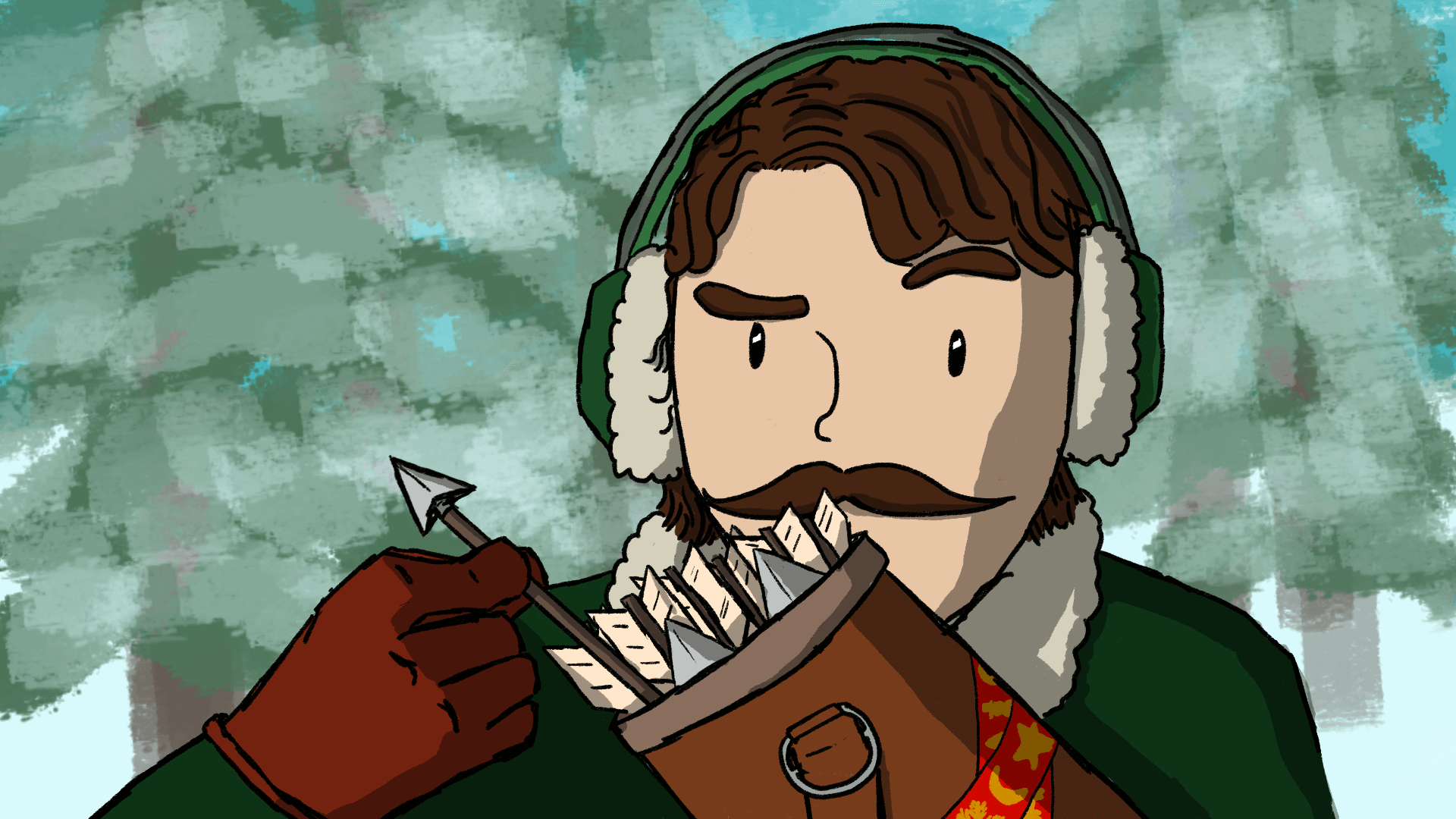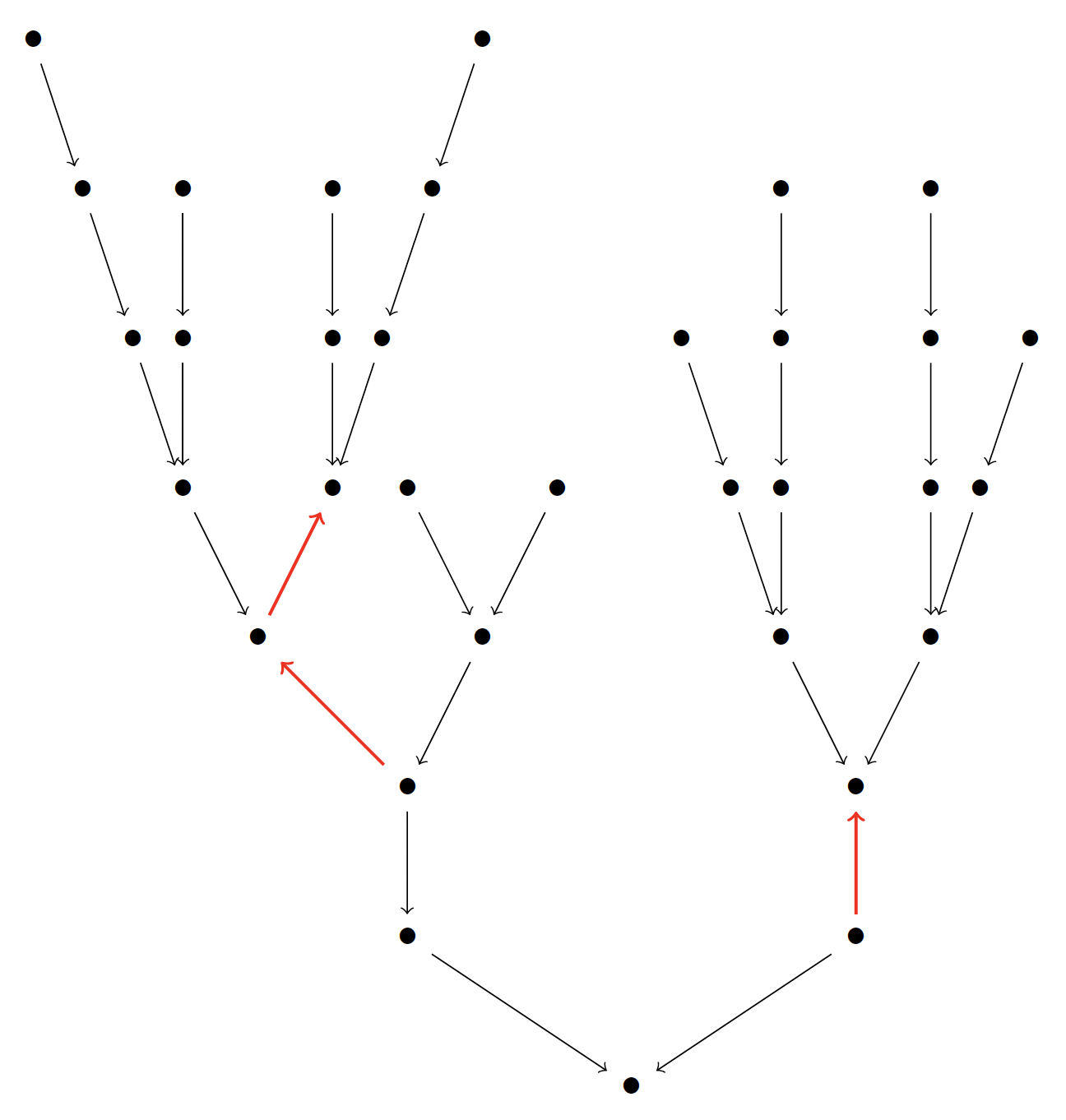
© Till Hausdorf, MATH+
Author: Jan Marten Sevenster (FU Berlin)
Project: Quiver Representations in Big Data and Machine Learning (EF 1-16)
Challenge
Robin Hood was given 32 brand new arrows for Christmas last year, which he meticulously ordered in a quiver by fixing them to certain points (see Figure 1). Today, Robin wants to go out into the snowy Sherwood Forest to finally try out the new arrows. However, as he shoulders his bow and quiver, he notices that the tips of three arrows are not looking down, but dangerously pointing upwards. So Robin could hurt himself if he reaches for the arrows.

Figure 1: The exact arrangement of the arrows in Robin’s quiver. The red arrows are upside down in the quiver.
For reasons only known to experienced archers, you can only change the orientation of the arrows in your quiver by choosing a point that has only arrowheads attached to it and flipping all the arrows attached to this point (see Figure 2).

Figure 2: An example of a permitted operation.
What is the units digit of the minimum number of operations needed so that eventually all arrows are pointing down?
Possible answers:
- 1
- 2
- 3
- 4
- 5
- 6
- 7
- 8
- 9
- 0
Project reference:
Quiver representations occur in the description and analysis of Big Data or neural networks. In the project EF1-16 Quiver Representations in Big Data and Machine Learning algorithmic and algebro-geometric methods are combined to classify quiver representations from Big Data and to analyze the geometry of the moduli space of a neural network. The operations described in the task are so-called Bernstein-Gelfand-Ponomarev reflections.